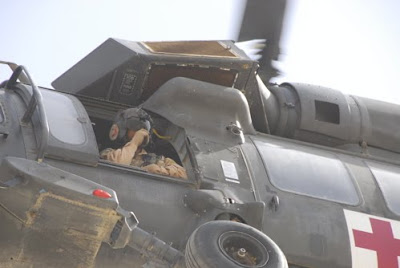"I want to see the world through your eyes!" says a friend, a lover, a caregiver, a well-meaning person who truly wants the experience of seeing life through the eyes of another.
Every person is infinitely complex. One of the ways I comprehend the existence of God in the universe is the complexity of every person I know. The more I know about anything infinite, the more I know that I don't know.
To some degree, I know my children. I share many experiences with each of my children. The more things I share with them, the more I know that they were and are growing and changing in a world about which I know nothing: school, friends, jobs, teams, their own reading, learning, triumphs, losses and loves.
For months now I have been working next to refugees and immigrants from Ukraine. Some have told me parts of their stories, but even as a veteran, I will never know (I hope) the vast pain they feel of fleeing their country because a tyrant invaded.
Then I had a moment of clarity that told me for sure, I would never see the world through someone else's eyes. Recently I visited the Musee des Arts et Metiers in Paris: a museum displaying French technology over the past half millennium.
To say the museum is vast just begins to describe it.
Three thousand permanent exhibits, many working models in glass cases, cover six thousand square meters of floor space (roughly an American football field with end zones) in in the Abbaye de Saint-Martin-des-Champs. It has half again as much space for storage.
Long hallways are lined with models of ships, steam engines, bridges, buildings, towers, factory production equipment, tools, scientific measuring devices, satellites, rotary telephones, floppy disk computers, switchboards, cars, aircraft, Foucault's pendulum and much more.
I walked through all of this museum in an afternoon, glancing at some things, lingering over others.
I started down a long hallway near the end of the exhibit area. I had found some connection with all of the exhibits, at least some understanding of the use or operation of many of the objects.
Then I saw a black inverted-V shaped object 50 yards away and connections with that particular thing started flooding into my mind. I was looking at a V-10 Renault engine, one of the RS series of engines that first entered Formula 1 racing in 1989 and continued with updates until 2013. I knew immediately that this engine powered the Williams F1 race car that won five world driving championships between 1992 and 1996. A later version of this engine powered the Red Bull car that Sebastian Vettel drove to four titles from 2010 to 2013. In between, it powered Fernando Alonso to both of his titles in 2005-6.
Renault RS3 V-10
The first title for the engine in 1992 was the one and only title for my favorite driver, Nigel Mansell. My youngest son is named for Mansell. The Renault RS3 V-10 powered Mansell to the world championship.
Nigel Mansell in his Red 5 Williams in 1987
The Renault V-10 was the engine of the 1990s, powering four more champions in the five years following Mansell's title.
In 2005, Fernando Alonso won the first of his two world championships with RS25 V-10, the last year of the V-10 engine in Formula 1. The next year Alonso took the title with the new V-8 version of the engine. Along with the new V-8 configuration, Renault introduced pneumatic intake and exhaust valves. The V-8 Renault could rev to 20,500 rpm. No other race car engine has ever revved like RS26.
Rev limiters followed. Then from 2010-2013 Sebastian Vettel drove a Renault-powered Red Bull car to four consecutive world championships.
I watched all or part of every Formula race from 1984 when ESPN began covering every race until now. The history of the Renault engine was alive in my mind as I approached the 350-pound lump of metal in a glass case.
Later I told my son about this moment. I said seeing that engine was like seeing him in a crowd at a soccer game. I would see a thousand faces, but when I saw his face, I would remember things from his whole life. In the museum, I saw more than a thousand objects, but that one flooded me with memories.
And yet, there is so much more to know about the Renault Formula 1 engines, about my son Nigel and about everyone I love and care about. Between zero and one lies an infinite number of numbers.
Can I see the world through someone else's eyes?
Maybe for a moment.
Maybe not.
When I described all I knew about that engine, I did not even begin to try to describe the emotions I associated with some of those races. I cheered myself hoarse when Mansell took the title in 1992. In 2007 my son Nigel and I began following and cheering for a rookie driver named Lewis Hamilton. In 2008 he won the closest title fight in Formula 1 history--the first of seven world championships. Which meant Nigel and I were cheering against the dominant Renault engines of Sebastian Vettel and Red Bull from 2010-2013.
Can I see the world through someone else's eyes?
Maybe for a moment?
I think not.

























.jpg)

.jpg)
.jpg)











